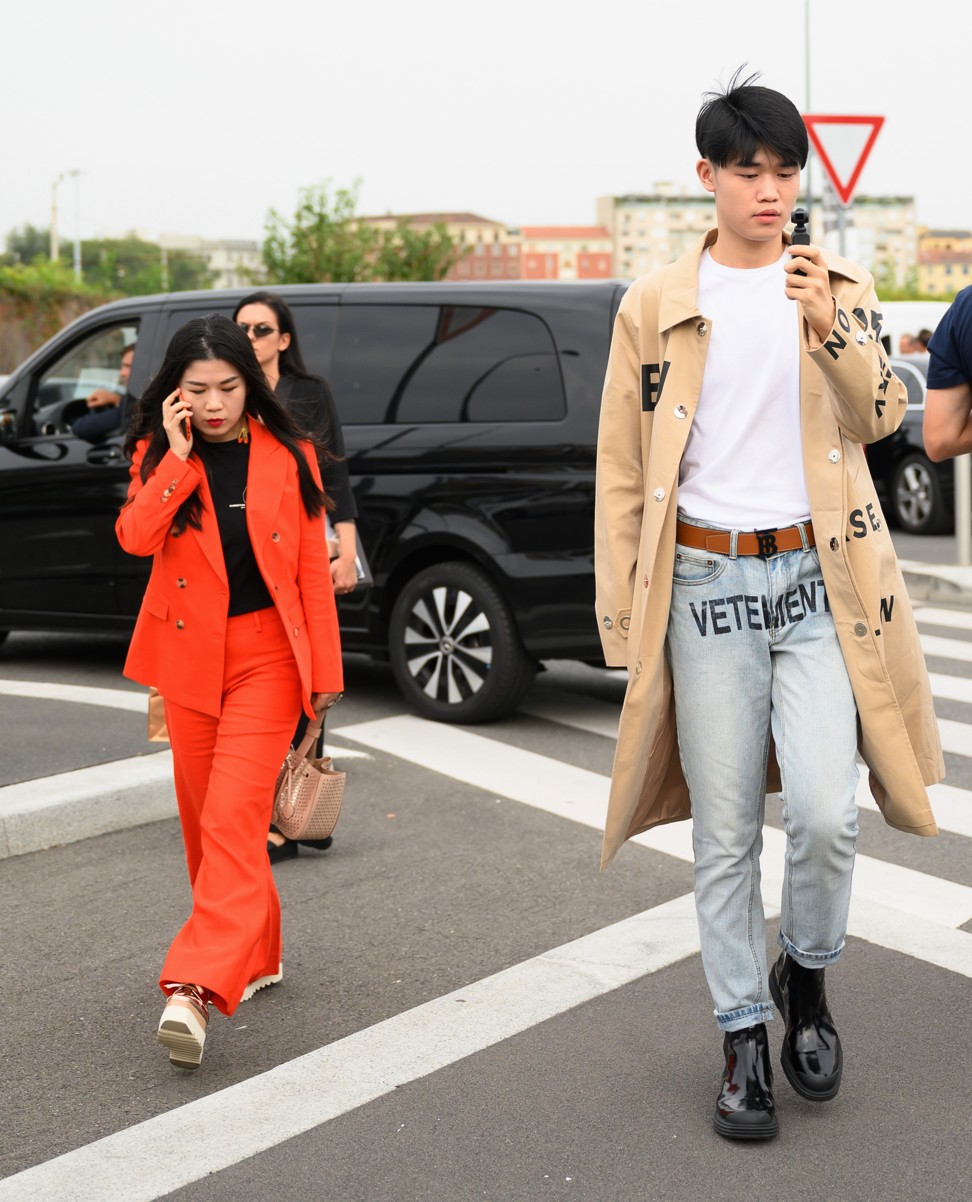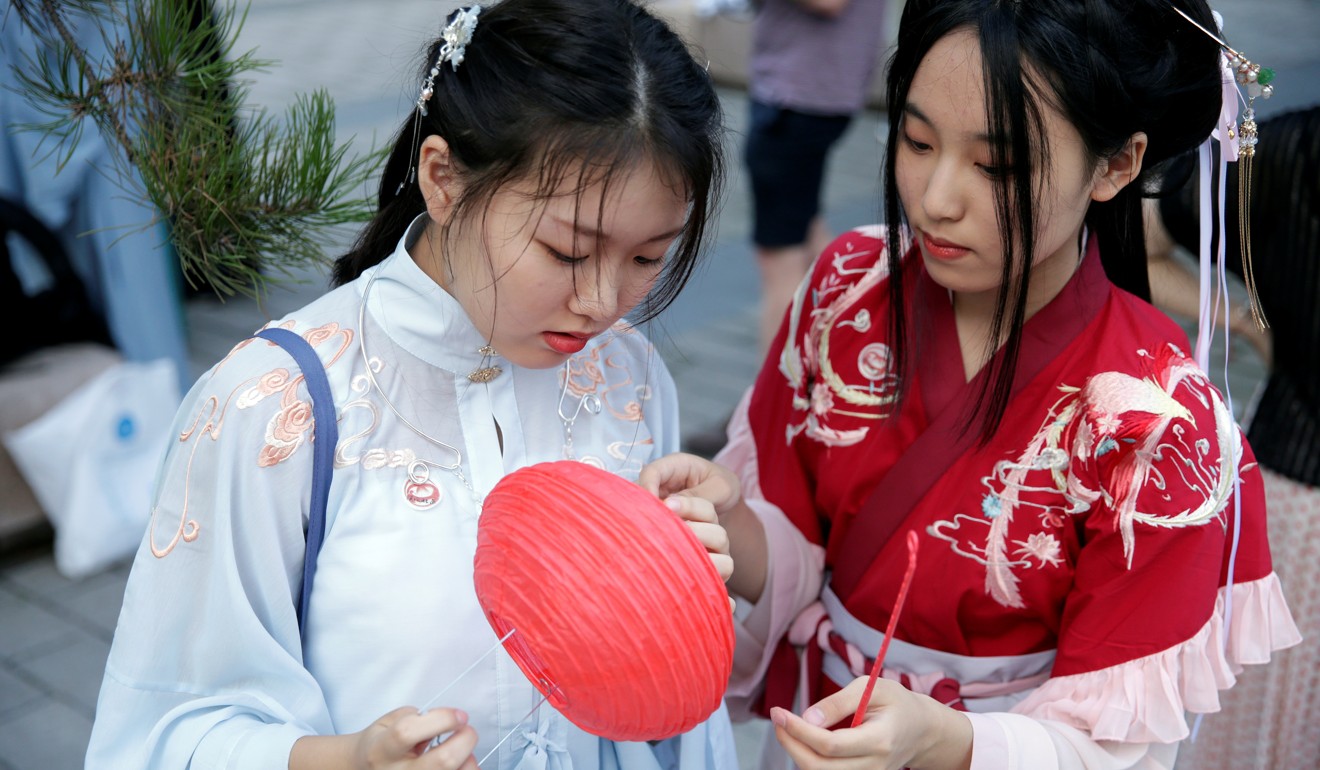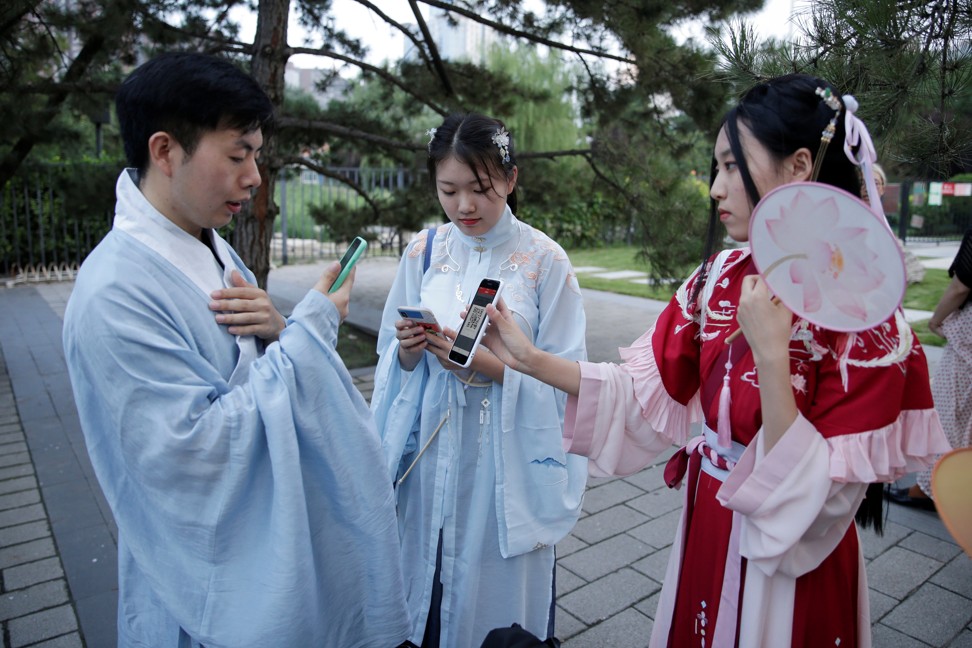
Generation Z in China the new focus of luxury fashion brands, which woo them with sneakers, streetwear and celebrities such as Fan Chengcheng
- Shoppers in China born since the mid-1990s spend more than counterparts in other markets, are nationalistic and prefer to buy products made in China
- Getting their custom is a challenge for Western luxury brands, which are turning to athleisure and collaborations with Chinese celebrities to reach them
The needs, quirks and interests of millennials have been analysed to death in newspapers, and by think tanks and marketing agencies. But the fashion industry – famously fascinated with all things shiny and new – has recently turned its attention to Generation Z. This group incorporates everyone born from the mid-1990s to the mid-2000s, and they make up 20 per cent of the Chinese population, with the oldest among them now reaching their mid-20s.
In the West, this age group is yet to make much of a mark on the fashion industry, but a report by management consultancy Bain has shown Chinese shoppers to be significantly younger than anywhere else in the world, with Gen Z already accounting for a substantial proportion of sales – hence the feeding frenzy for their custom.

According to another global consultancy firm, OC&C Strategy Consultants, under-25s account for around 13 per cent of household spending in China, the highest among nine countries it profiled, among them Brazil, France, Germany, the UK and the United States.
Transparency is one of the great challenges that fashion companies are going to face in order to win over these new clients
“Luxury brands that may be better known for handbags or heels have increasingly embraced casualisation with streetwear and athleisure product categories like hoodies and sneakers,” says Elizabeth Flora, the Asia editor of Gartner L2. “We found that 60 per cent of fashion labels mentioned sneakers on their Weibo accounts during the study period.”
“Brands are also boosting their visibility with Gen Z shoppers by teaming up with streetwear labels or young Chinese celebrities for product collaborations, which generate significant social media engagement.”
Also known as post-millennials or the iGeneration, Gen Z differs from millennials – those born in the 1980s and early ’90s – in a number of significant ways. Firstly, they grew up in a world overrun with technology. Inventions that everyone before them took as life-changing were merely a reality for them – and as a result they expect businesses, brands and retailers to be loyal to them and highly efficient. If they don’t feel appreciated, they’re going to move on.

In the West, Gen Z was deeply affected by the recession that began with the global financial crisis in 2008. This has manifested itself in their frugality, valuing of experiences over products, and increased likelihood of becoming entrepreneurs. But in China, this same age group grew up under an economic boom, and as a result, they aren’t particularly frugal.
This, interestingly, has also made them lot more patriotic when it comes to fashion than their older compatriots.
Chinese Gen Zs are very positive about the prospects for China, which is understandable given most of them grew up during a period of lightning-fast urbanisation in the country. Nearly half of Chinese respondents in the OC&C Strategy Consultants’ report said they were optimistic about the future, and 33 per cent believe they will enjoy a better life than the previous generation.

“Generation Z in China are more open-minded, and their English is better than millennials’,” says Xiaofeng Gu, a director at fashion marketing agency Kollective Influence. “They are used to social media and used to global [connectivity], which means that they are less insular. But as a result, they are not as impressed by foreign brands.
Gen Z – more than any generation that has come before them – is now bypassing brands that focus much of their marketing on their illustrious European or American heritage and are looking for Made in China products instead. They have been heavily involved in the nationalist outrage directed at foreign brands – for offences against China both real and perceived – which has reached fever pitch in the past year or so.

Gen Z’s nationalistic tendencies also make it nostalgic: the Beijing Hanfu Society, whose members dressing in gauzy gowns and silk robes that hark back to the Qing dynasty, is rapidly growing in popularity. It is mainly made up of young Chinese women – the average age of wearers is just 21, and nine out of ten are female.
The roots of the society are even more nationalistic than its current incarnation: it was launched as an attempt to stand up for Han culture after historical foreign invasions, and harks back to ethnic Manchu rule rather than what they see as empty multiculturalism in contemporary China.
Generation Z in China are more open-minded, and their English is better than millennials’
No doubt due to their famously short attention spans, Gen Zs like bricks-and-mortar shopping displays where every brand and type of product is exhibited under one roof – more good news for department stores. Large retailers that run “pop-up” spaces and host events in-store, such as concerts, yoga classes and sustainability workshops will prove particularly attractive – largely because the results can be shared online.
Then there is the matter of the environment, which is far more important to Gen Z than it has ever been to Chinese millennials. Reports show that, like their peers around the world, Gen-Z shoppers want to know the origin of their clothes; where they have been manufactured and with what materials – particularly now so much apparel production is leaving Chinese shores.

Carla Buzani, managing director of the professional trends portal WGSN, says: “Transparency is one of the great challenges that fashion companies are going to face in order to win over these new clients.”
From streetwear to silk robes, what China’s Generation Z wants right now is as hard to define as their sartorial choices – but one thing brands can be sure about is that this is an age group that won’t accept a one-size-fits-all approach to marketing, or any more lazy stereotypes.

